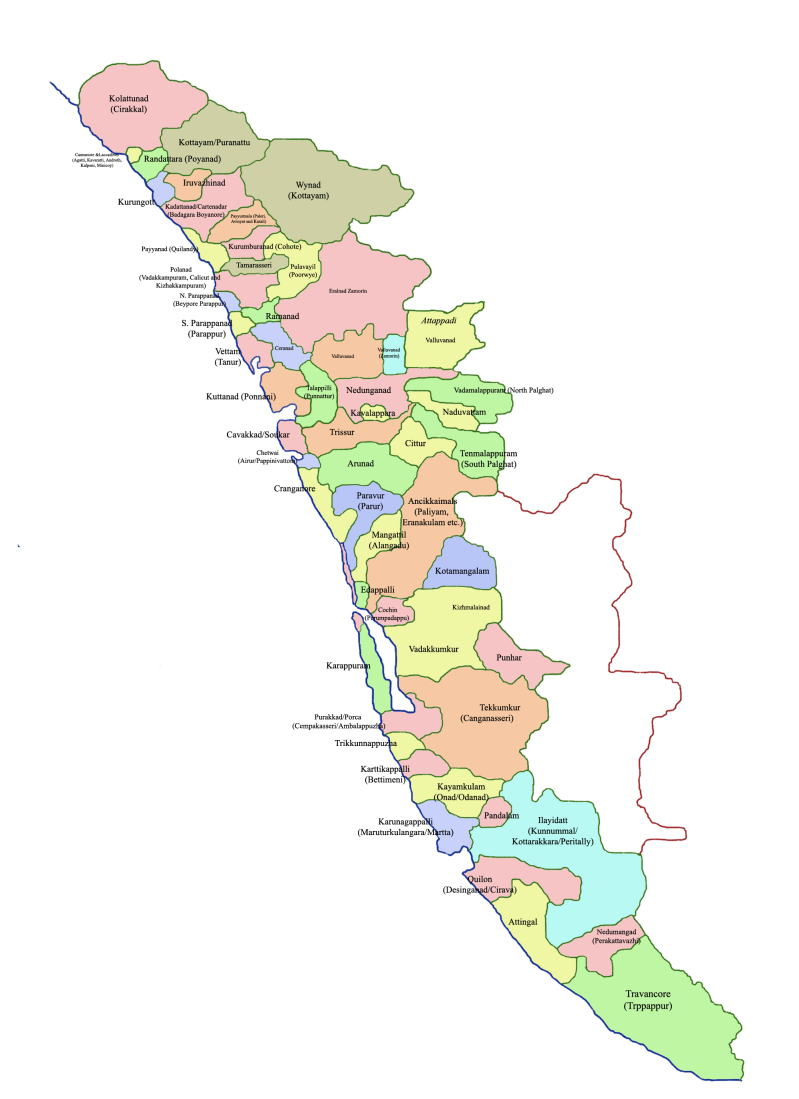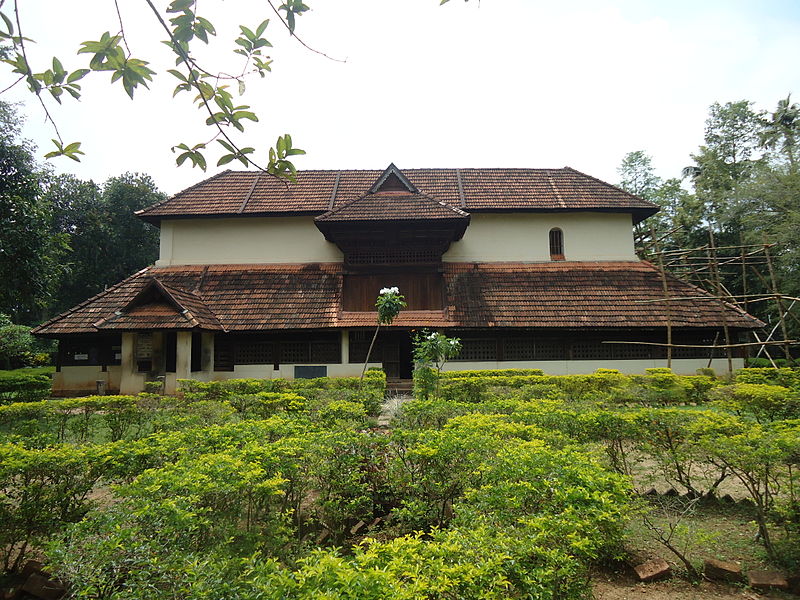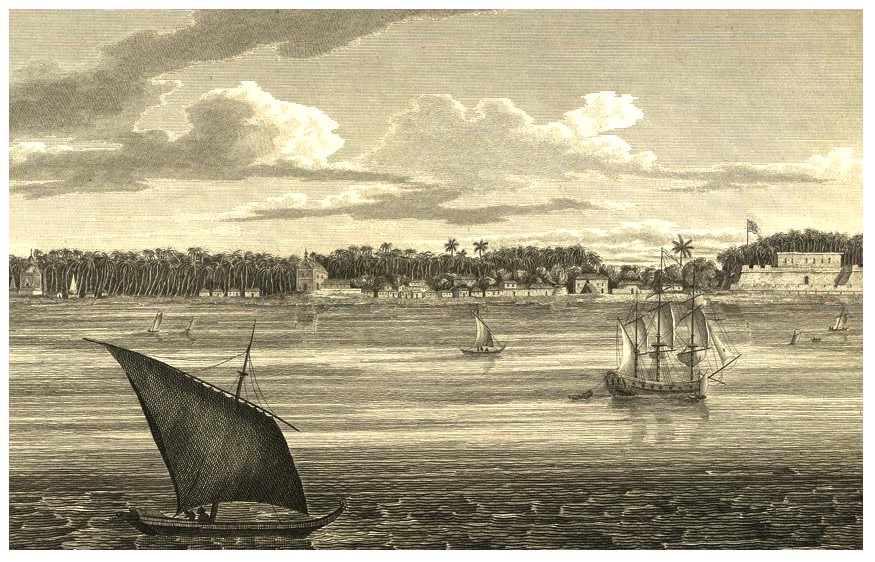In the late 1600s, the most respected and the most formidable ruler in Kerala was a queen. Her name was Umayamma Rani and she was the senior-most Queen of the Kingdom of Attingal. You might think that at a time when men ruled, and women were kept locked away in their houses, a powerful queen was an exception, but in fact, she was not. Umayamma came from a long line of powerful queens who, for centuries, had ruled a little kingdom called Attingal.

In the late 1600s, the most respected and the most formidable ruler in Kerala was a queen. Her name was Umayamma Rani and she was the senior-most Queen of the Kingdom of Attingal. You might think that at a time when men ruled, and women were kept locked away in their houses, a powerful queen was an exception, but in fact, she was not. Umayamma came from a long line of powerful queens who, for centuries, had ruled a little kingdom called Attingal.
Attingal was originally a part of the kingdom of Venad, which spanned Trivandrum in Kerala, and parts of Tamil Nadu too. For centuries, the royal families of Venad followed a system of inheritance called the ‘marumakkathayam’, or the matrilineal system. In this system, family wealth and titles passed from the king to his sisters’ children. His sister was the Queen, and she was an integral part of the succession process. She had to have children- at least one boy, but more importantly, one girl. If a Queen only had male children, the king had to adopt a princess from a neighbouring royal family to be his niece. This wasn’t always easy. Other royal families also followed ‘marumakkathayam’ and were reluctant to give up their girls.
In 1305 a solution was formulated by the then ruler of Venad. He enticed two princesses from the nearby kingdom of Kolathiri to join his household. He carved out the Attingal region from his kingdom and gave it to them, declaring that they and their female heirs were the sovereign rulers of Attingal. In return, they would be the Queens of Travancore and give their sons to Travancore as kings.
The Attingal Queens were a force to be reckoned with in their day. They held much political and socio-religious sway and were held in high regard by the kings of Travancore, and the public. In their 400 year rule, these powerful ranis held autonomous power in Attingal and did pretty much what they wanted to. They waged wars, granted favours, made treaties, and generally made life difficult for the Kings of Travancore — despite them being sons, brothers and nephews. They considered themselves entirely independent of the laws of Travancore. Sometimes they even negotiated deals with other powers on behalf of Travancore- with or without the king’s knowledge.

One of these Queens was Ashvathi Tirunal, better known as Umayamma Rani. In 1677, King Aditya, the ruler of Travancore died, and his closest nephew and rightful heir was a prince named Ravi Varma. But Ravi Varma was a minor and too young to be crowned. Sensing an opportunity, princes from other branches of the family staked a claim to the throne. At that time, Umayamma was junior Rani and aunt to the minor prince Ravi Varma. Umayamma rose to the challenge and took the title of regent. She was a bold queen. Within a short time she defeated all the other pretenders. She cleverly gave trade concessions to the British – balancing out the Dutch threat.
An extremely capable matriarch, foreign visitors to her court described Umayamma as ‘an Amazon who was feared and respected by everyone’. In those days, there was a law that banned Attingal Ranis from crossing a river into the southern territories of Travancore. When Ummayama was still only a junior queen, she led a campaign across the river, and into Travancore. Her ferocity and the mighty army that followed her, had the local king take flight in fear.
One foreign visitor to her court wrote that Umayamma Rani had ‘whom and as many as she pleases to the honour of her bed’. Handsome men were a common sight in her court. There is a story that says that she once took a shine to a particularly beautiful Englishman and took him as her lover. She was so pleased with him, that when he left her court she gave him many presents. One of the presents was a grant for Anjengo, which for many years stood second only to Bombay as a port of importance.

By the time Ravi Varma was formally crowned in 1685, the kingdom had stabilised. Ravi Varma went on to rule till 1718. Umayamma dominated Travancore politics till her death in 1698. Unfortunately, she was one of the last true sovereign queens of Attingal. After her death, there was no natural female successor. The Rani who was eventually adopted was an outsider to Attingal, and so faced many problems from her court. The power of the Ranis slowly declined. When Marthanda Varma became the king in 1729, he made a treaty with the then principal Rani and moved all the Attingal Ranis out to Trivandrum. While they retained their social standing, they lost all political power. He allotted a royal estate to them and settled them right where he could keep a close eye on them.
To hear more stories about the Travancore Royal family, and about the Padmanabhaswamy temple itself, join Storytrails on The Kingdom of the Gods walking trail in Trivandrum.
Archives
- January 2022
- December 2021
- November 2021
- August 2021
- March 2021
- February 2021
- January 2021
- December 2020
- November 2020
- October 2020
- September 2020
- August 2020
- April 2020
- March 2020
- February 2020
- January 2020
- November 2019
- October 2019
- September 2019
- August 2019
- July 2019
- June 2019
- August 2017
- February 2017
- January 2017
- October 2013
Featured Posts
- Tales that pots tell: Keeladi excavations AUGUST 18, 2021
- The Last Grand Nawab: Wallajah FEBRUARY 10, 2021
- How Tej Singh became Raja Desingu of Gingee FEBRUARY 5, 2021
- How Shahjahan seized the Mughal throne JANUARY 28, 2021
- Alai Darwaza – Qutub Minar Complex, Delhi NOVEMBER 21, 2020
- Marking History through British buildings NOVEMBER 17, 2020
- The last great queen of Travancore NOVEMBER 7, 2020
- Brahmi and the evolution of scripts OCTOBER 15, 2020
- The Cambodian King of Kanchipuram OCTOBER 14, 2020
- James Prinsep – the man who read the writing on the wall OCTOBER 10, 2020
- Mariamman – the Village Goddess who travelled SEPTEMBER 30, 2020
- Misnamed Monuments of Mamallapuram SEPTEMBER 28, 2020








